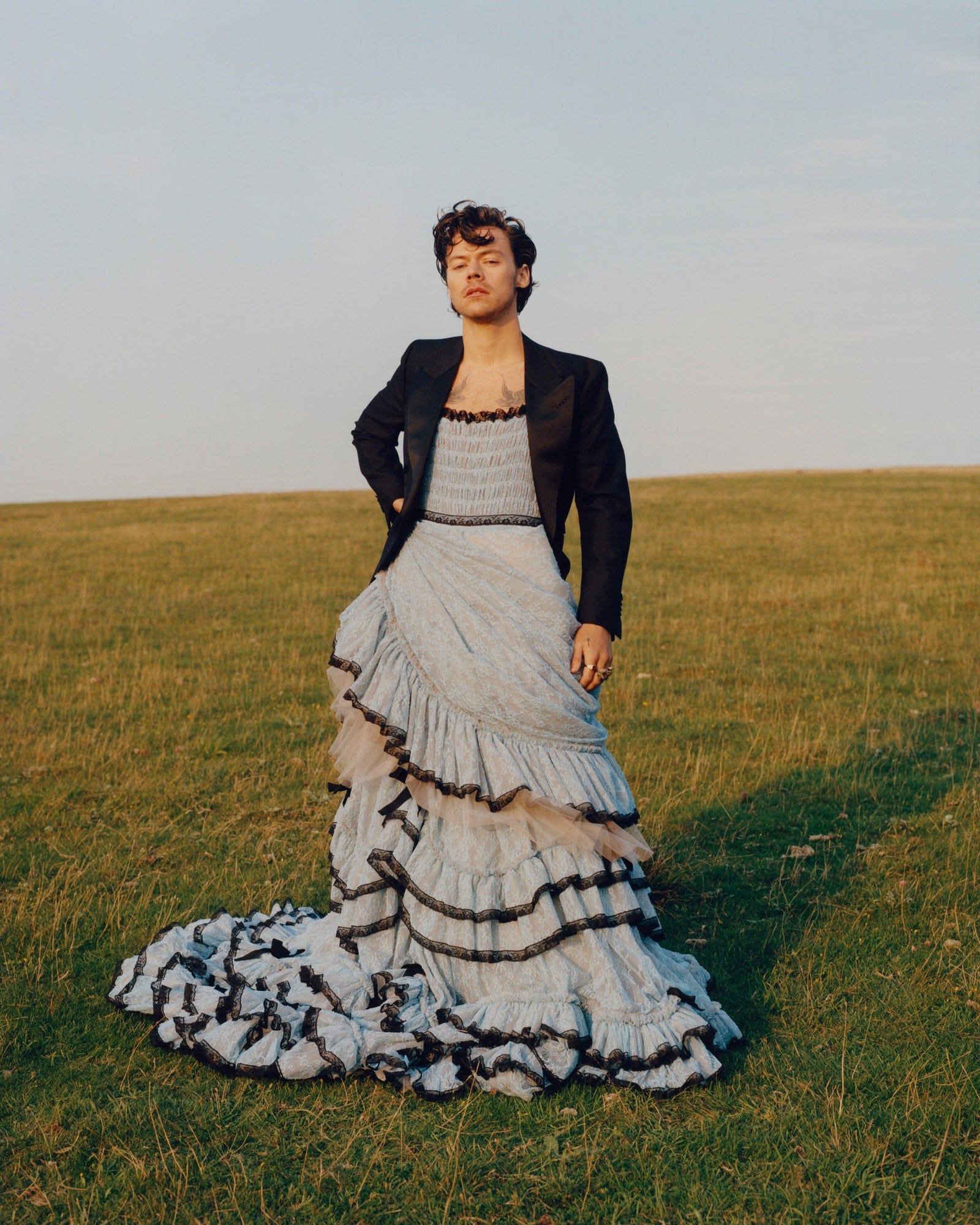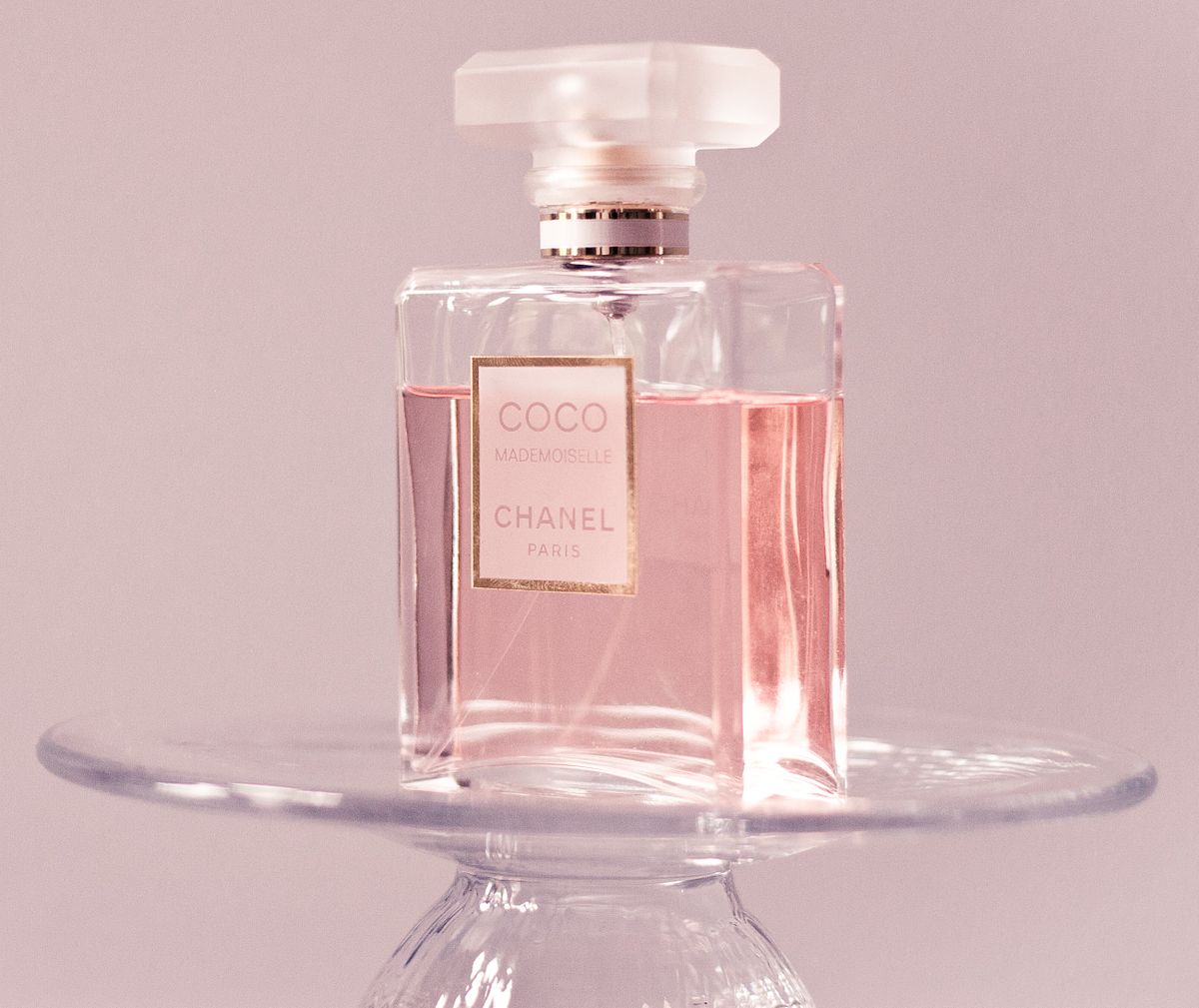[vc_row njt-role=”people-in-the-roles” njt-role-user-roles=”administrator,armember”][vc_column][vc_column_text]
On November 16, 2020, pop-rock singer Harry Styles appeared on the cover of Vogue US magazine. If the effigies of this emblematic newspaper are mostly feminine, it is therefore a man who decides this time to break the codes of the fashion industry. In the photo, the musician is actually wearing a long dress, a symbol of femininity. Is the fashion industry breaking away from gender ?
Even if it hadn’t been enforced for a very long time, it was only in 2013 that the law of 1800 prohibiting “the transvestism of women” was repealed. Thus, it has only been seven years since women have been legally allowed to wear pants and suits in France.
Recently, it is men who have taken over the women’s wardrobe. While ruffles, silks and colorful prints were a sign of opulence until the 18th century, all these fantasies fell into disuse during the Industrial Revolution, so that men have since stuck to sober ensembles and neutral cuts, forbidding any form of eccentricity.
In the 1960s, however, “unisex” collections introduced a change in fashion industry standards. With social inclusion at the heart of the current debate, many brands now offer clothing “for everyone”, even proposing no-gender collections that can be worn by both men and women.
This abandonment of the gender variable implies “smoothing out” the proposed pieces, which must be as neutral as possible. For example, designer Telfar Clemens‘ brand offers basic or even minimalist clothing, combined with a strong streetwear sensibility. The pieces are thus addressed to everyone, regardless of sex and gender. In 2020, the British fashion house Stella McCartney unveiled its first no gender collection – “Shared” – also influenced by streetwear and revisiting certain typically masculine pieces such as the suit.
The brand of Mike Eckhaus and Zoé Latta, meanwhile, adopted a genderless posture in 2011. The two designers have never presented collections intended only for men or women, while their e-commerce site is classified by clothing rather than by gender. For their fashion shows, both designers use non-professional models, sometimes even recruited from their entourage, regardless of their gender. “We relate to gender identity in a slightly less aggressive way. It’s less binary and it’s something we’ve always felt in tune with,” Eckhaus said.
More recently, the editor-in-chief of So Soir magazine – Ingrid Van Langhendonck – gave a nuanced view of no-gender fashion on RTBF‘s newscast. “If fashion is on the move and that’s encouraging, it’s clear that these collections are above all built on a men’s wardrobe. They are wide pants, oversized sweaters: a general silhouette that blurs the shapes and smoothes the bodies. We would have liked to see emerging dresses, long tunics, skirts for men, but we have to admit that a fashion which wants to be non-gendered remains under the influence of male codes. Nevertheless, it gains a strong adhesion with the youngest and it is a good thing that the teenagers who are in search of their sexual identity or who have difficulties to appropriate the changes of their body can adopt a fashion which does not oblige them to determine themselves too much and leaves them time to find their style and their identity. In this respect, this fashion moves the lines, and highlights such as the cover of Vogue contribute to more mixity”.
Read also > ACCRA FASHION WEEK : FIVE GHANAIAN DESIGNERS HONORED BY MERCEDES-BENZ
Featured Photo : © Vogue[/vc_column_text][/vc_column][/vc_row][vc_row njt-role=”not-logged-in”][vc_column][vc_column_text]
On November 16, 2020, pop-rock singer Harry Styles appeared on the cover of Vogue US magazine. If the effigies of this emblematic newspaper are mostly feminine, it is therefore a man who decides this time to break the codes of the fashion industry. In the photo, the musician is actually wearing a long dress, a symbol of femininity. Is the fashion industry breaking away from gender ?
Even if it hadn’t been enforced for a very long time, it was only in 2013 that the law of 1800 prohibiting “the transvestism of women” was repealed minha opinião aqui. Thus, it has only been seven years since women have been legally allowed to wear pants and suits in France.
Recently, it is men who have taken over the women’s wardrobe. While ruffles, silks and colorful prints were a sign of opulence until the 18th century, all these fantasies fell into disuse during the Industrial Revolution, so that men have since stuck to sober ensembles and neutral cuts, forbidding any form of eccentricity.
[…][/vc_column_text][vc_cta h2=”This article is for subscribers only.” h2_font_container=”font_size:16″ h2_use_theme_fonts=”yes” h4=”Subscribe now!” h4_font_container=”font_size:32|line_height:bas” h4_use_theme_fonts=”yes” txt_align=”center” color=”black” add_button=”right” btn_title=”I SUBSCRIBE!” btn_color=”danger” btn_size=”lg” btn_align=”center” use_custom_fonts_h2=”true” use_custom_fonts_h4=”true” btn_button_block=”true” btn_custom_onclick=”true” btn_link=”url:https%3A%2F%2Ftest2023.luxus-plus.com%2Fen%2Fabonnements-et-newsletter-2-2%2F|||”]Unlimited access to all the articles and live a new reading experience, preview contents, exclusive newsletters…
Already have an account? Log in.[/vc_cta][vc_column_text]Featured photo: © Vogue[/vc_column_text][/vc_column][/vc_row][vc_row njt-role=”people-in-the-roles”][vc_column][vc_column_text]
On November 16, 2020, pop-rock singer Harry Styles appeared on the cover of Vogue US magazine. If the effigies of this emblematic newspaper are mostly feminine, it is therefore a man who decides this time to break the codes of the fashion industry. In the photo, the musician is actually wearing a long dress, a symbol of femininity. Is the fashion industry breaking away from gender ?
Even if it hadn’t been enforced for a very long time, it was only in 2013 that the law of 1800 prohibiting “the transvestism of women” was repealed. Thus, it has only been seven years since women have been legally allowed to wear pants and suits in France.
Recently, it is men who have taken over the women’s wardrobe. While ruffles, silks and colorful prints were a sign of opulence until the 18th century, all these fantasies fell into disuse during the Industrial Revolution, so that men have since stuck to sober ensembles and neutral cuts, forbidding any form of eccentricity lea aquí.
[…][/vc_column_text][vc_cta h2=”This article is for subscribers only.” h2_font_container=”font_size:16″ h2_use_theme_fonts=”yes” h4=”Subscribe now!” h4_font_container=”font_size:32|line_height:bas” h4_use_theme_fonts=”yes” txt_align=”center” color=”black” add_button=”right” btn_title=”I SUBSCRIBE!” btn_color=”danger” btn_size=”lg” btn_align=”center” use_custom_fonts_h2=”true” use_custom_fonts_h4=”true” btn_button_block=”true” btn_custom_onclick=”true” btn_link=”url:https%3A%2F%2Ftest2023.luxus-plus.com%2Fen%2Fabonnements-et-newsletter-2-2%2F|||”]Unlimited access to all the articles and live a new reading experience, preview contents, exclusive newsletters…
Already have an account? Log in.[/vc_cta][vc_column_text]Featured photo: © Vogue[/vc_column_text][/vc_column][/vc_row]










